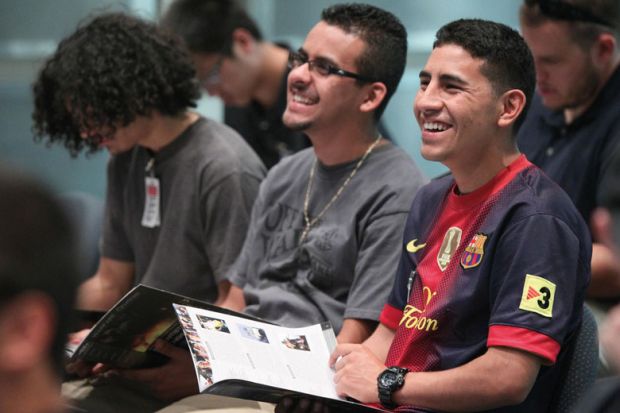The Hispanic population of the US appears to be getting an emphatic boost from higher education as a pair of new analyses suggest that the community has become a leader in using public colleges to secure financial success for its members.
The studies – one by Georgetown University’s Center on Education and the Workforce and the other by Third Way, a public policy thinktank – both aimed to rank US colleges and universities by the return on investment they offer low-income students.
Both produced lists that, to varying degrees, are dominated by public institutions in California, where the college-age population is about 50 per cent Hispanic.
The findings reflect dedicated attention to boosting the Hispanic community across much of the California State University and University of California systems, said a lead author of the Georgetown report, Martin Van Der Werf, director of editorial and post-secondary policy at the education policy centre.
It likely also demonstrates a growing prioritisation by Hispanics in the US of the value of higher education, Mr Van Der Werf said. Only about 19 per cent of Hispanics in the US have a bachelor’s degree, as compared with 26 per cent in the black population. But Hispanic college attainment rates appear set to improve substantially, he said.
Measured nationwide by ethnic group, Hispanics have had the fastest percentage increase in rates of traditional college-age enrolment – rising from 22 per cent of those aged 18 to 24 in 2000 to 36 per cent in 2018. In the span of less than 20 years, Mr Van Der Werf noted, the college-going rate of Hispanic students increased so much as to be, in essence, on a par with black students and almost with white students, at 42 per cent.
Both the Georgetown centre and Third Way set out in their analyses to use federal data to identify the institutions that give low-income students the greatest improvement in expected earnings at the best price.
The numbers in many cases identified some of the nation’s most elite institutions – in the Ivy League or universities with similar levels of selectiveness – that generously subsidise their low-income students. But both analyses used formulas that discounted that phenomenon, when measuring overall economic mobility, because they are relatively small institutions that enrol relatively few low-income students.
Among institutions that durably succeed in raising the economic prospects of large numbers of low-income students, the lists by Georgetown and Third Way repeatedly credited public campuses with large Hispanic populations, especially in California, Texas and New York state.
The California State University system has emerged as an innovator among US institutions that have put an emphasis in recent years on methodically identifying the hurdles that prove likely to block their students from graduating and then working to remove them. Such steps at CSU include moves towards eliminating remedial classes, which have been criticised as more likely to deter students than help them.
CSU’s emphasis on serving its state’s rising share of Hispanic students appears to be working in both directions, said a spokesman for the system.
“The effect of all of these efforts and commitment from all levels is that families do understand the transformative benefits of attaining a CSU education – and specifically parents relay that importance to their children,” the spokesman said. “We’ve still got a lot of work to do on that front, but it will be an even greater focus over the next several years.”
Register to continue
Why register?
- Registration is free and only takes a moment
- Once registered, you can read 3 articles a month
- Sign up for our newsletter
Subscribe
Or subscribe for unlimited access to:
- Unlimited access to news, views, insights & reviews
- Digital editions
- Digital access to THE’s university and college rankings analysis
Already registered or a current subscriber? Login








